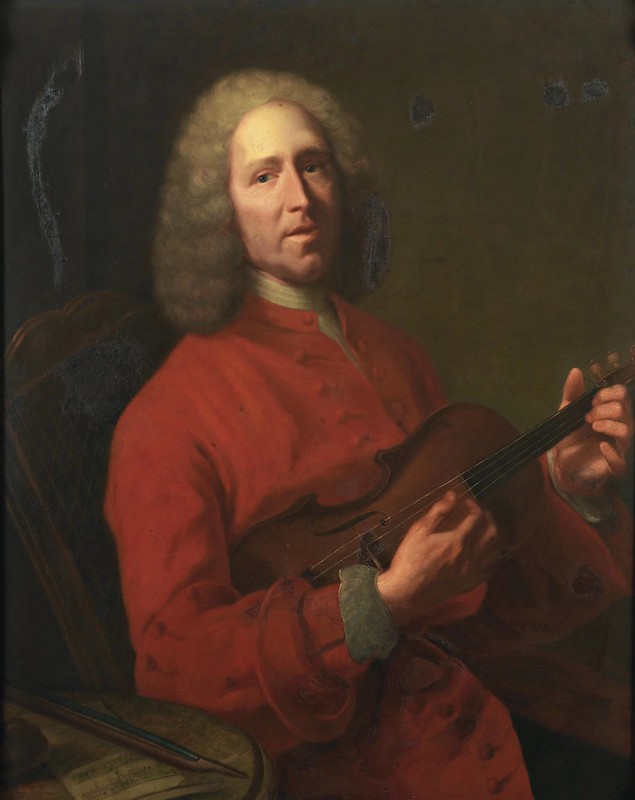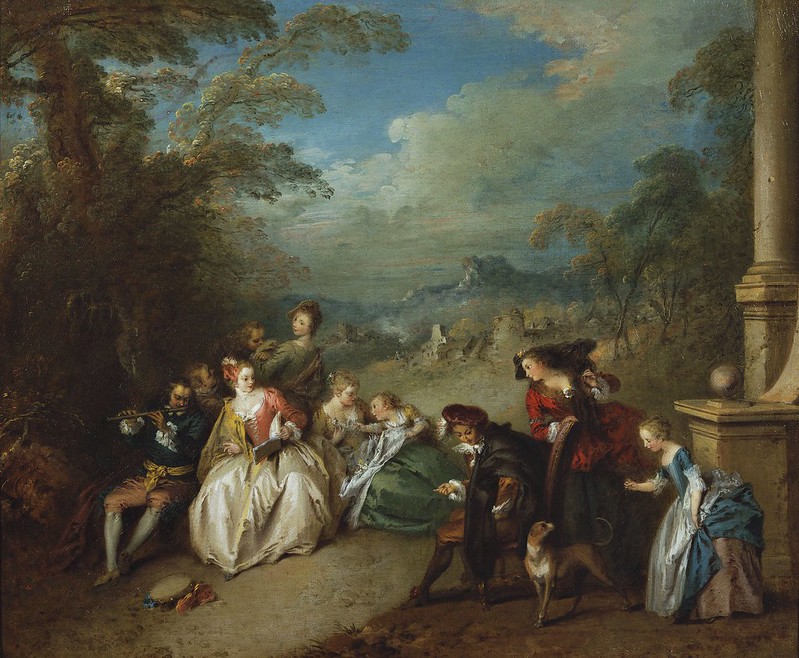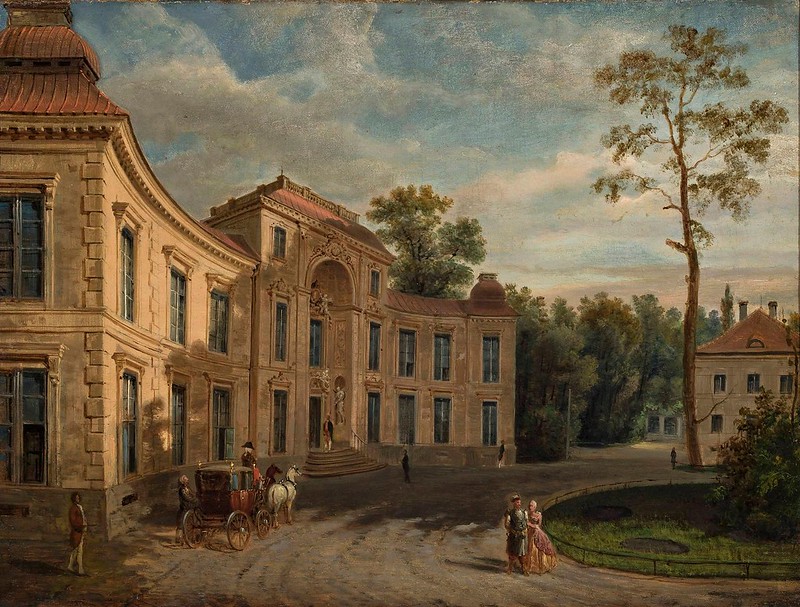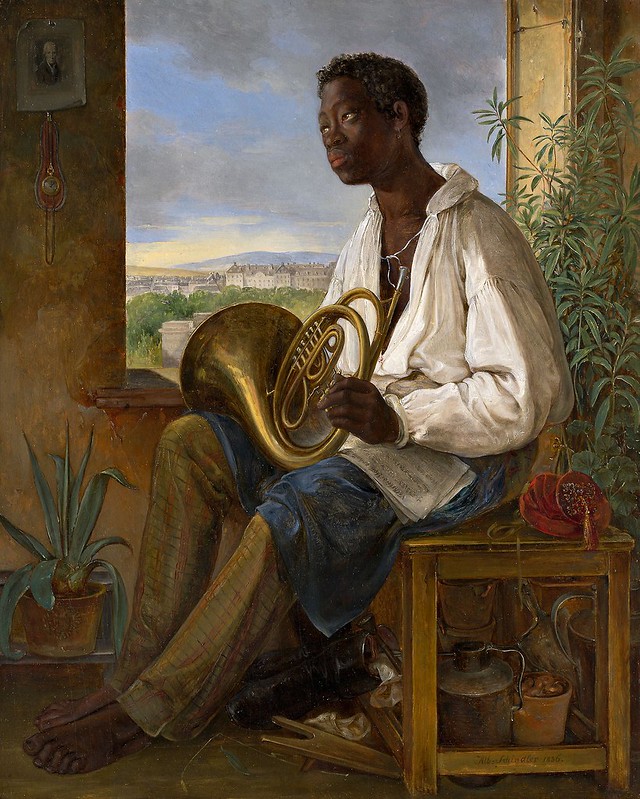Jacques-Martin Hotteterre (1673-1763)
- Suite pour la flûte-traversière avec la basse (c.1715)
Performers: Gеnеvièvе Nοufflаrd (flute); Marie-Thérèsе Hеurtiеr (cello);
Laurence Boulay (1925-2007, cembalo)
---
French composer. Son of Martin Hotteterre (c.1635-1712). He was the most
celebrated member of the family, and had a brilliant career as a
player, teacher and composer. Several years before his mother's death in
1708, Jacques's father gave him 3000 livres to acquire the post of
‘grand hautbois du roy’. He obtained the reversion of the post of
‘flutte de la chambre de roy’ on 26 August 1717 (for 6000 livres) on the
retirement of René Pignon Descoteaux, although he is referred to as
such on the title page of his Premier livre de pièces, published nine
years earlier. In 1747 his court posts passed to his eldest son,
Jean-Baptiste Hotteterre (1732-1770), a maker and player of woodwind
instruments. On 2 January 1763 Jacques's daughter, Marie-Geneviève,
married the organist Claude-Bénigne Balbastre; the many signatures of
illustrious musicians and aristocrats on the contract testify to
Jacques's high social standing at the end of his life. His estate
included several grand houses in Paris, his wealth derived from family
inheritance and marriage as well as his popularity as a teacher of
amateurs of the fashionable world. The frontispiece of his Principes de
la flûte traversière is presumed to be a portrait of him, playing a
three-piece flute from his father's workshop. Titon du Tillet (Orchestre
de Parnasse, 1743) placed him among the most important musicians of
France. If he did make flutes, as is claimed in the diary of J.F.A. von
Uffenbach (1715), it was probably in association with the family
workshop on the rue de Harlay; neither the inventory taken at his
marriage nor that taken after his death list woodwind instruments or
tools for their manufacture. The inventory of Jacques's music library
contained within his marriage contract defines his circle of musical
influence. Jacques drew upon these composers' music for examples in
L'art de préluder and Méthode pour la musette, which consists of 32
pages of popular songs and dances, especially brunettes, vaudevilles and
airs. Lully's music is prominent in his settings for transverse flutes
of Airs et brunettes à deux et trois dessus.
Equally at home in both the French and Italian styles, his nickname ‘le
Romain’ underscores his association with Italian music which is apparent
in his arrangements of Italian sonatas by Robert Valentine and
Francesco Torelio, and his Sonates en trio reflecting the manner of
Corelli. The introductory comments to Principes and to the Premier livre
de piéces, which contain the first pieces to be published for two
unaccompanied flutes, make clear his intentions to dedicate his musical
career to establishing a pedagogy, performing practice and repertory for
the transverse flute which he described as ‘one of the most pleasant
and one of the most fashionable instruments’. That he allowed for his
music to be played on other treble instruments was but a practical way
of broadening his audience. In 1715 he published a second book of Pièces
which marked the first appearance of multi-movement works for flute and
bass designated as sonatas, and also brought out a new edition of the
Premier livre. Jacques's music and theoretical works remained popular
throughout his long career, even though by the time he married in 1728
he was approaching retirement, while Blavet, his successor as France's
leading flautist, had just published his op.1, six sonatas for
transverse flute, signalling the end of the era of the three-piece
baroque flute, the instrument for which Jacques's music was written, and
the rise of the four-piece flute with corps de rechange. Jacques
confirmed his continued attachment to the charm of the musette and its
aristocratic associations with the publication in 1722 of La guerre,
pièce de musette followed by his highly acclaimed Méthode pour la
musette in 1737. That year his nephew, E.P. Chédeville, a musette maker
and composer, acquired the post of hautbois et musette de Poitou from
J.S. Mangot, the brother-in-law of Rameau who had acquired it from
Jacques's brother, Jean Hotteterre (c.1666-1720).
















